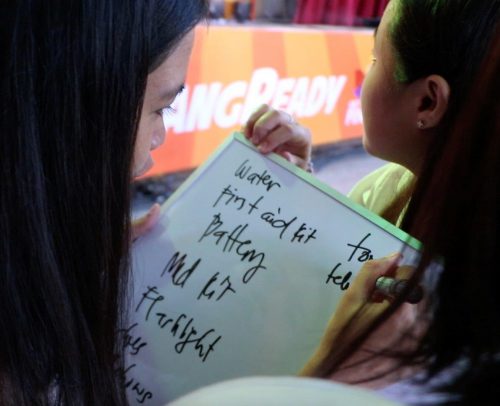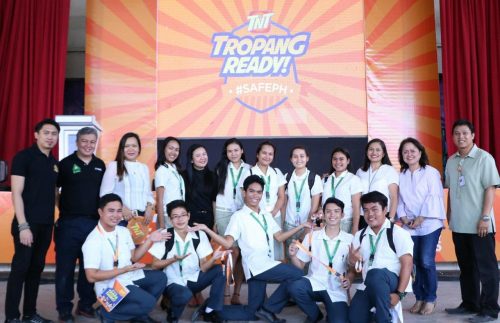Five years since the 7.2-magnitude earthquake that struck Bohol, the events during that day are still fresh in the minds of the students who went through the ordeal.
The quake, whose epicenter was in Bohol, struck on October 15, 2013, and jolted most of the Visayas and parts of Mindanao and Luzon. It was one of the strongest earthquakes to hit the Philippines in recent years, causing injuries and loss of lives, and massive damage to property and infrastructure.
A few weeks later, the province was hit by Supertyphoon “Yolanda” (Haiyan), one of the strongest tropical cyclones on record.

Recently, Tropang Ready disaster preparedness caravan was held at the Holy Name University in Tagbilaran City organized by PLDT wireless unit Smart Communications, Inc.
Smart’s TNT Tropang Ready aims to train youths in disaster preparedness skills so that they can help their communities in times of calamities. Smart recently brought the caravan to HNU as part of the company’s nationwide learning series on disaster preparedness geared toward the youth.
“At Smart, we work hand in hand with our partners to promote the culture of preparedness within communities. We are tapping the youth for this program—Bohol students, specifically—because of their skills, their tech savvy and their first-hand experience of surviving a calamity,” said Ramon R. Isberto, PLDT and Smart public affairs head.

More than 1,000 students and school personnel were taught emergency preparedness lessons by representatives of the Philippine Institute of Volcanology and Seismology, the provincial disaster risk reduction and management office, and resource persons from Emergency Management Center.
The speakers discussed emergency risks and hazards and demonstrated the proper way to do the duck-cover-hold protection technique during earthquakes: duck, or drop to the floor; take cover under a sturdy piece of furniture (or against a wall); and hold on to the piece of furniture.
The speakers also shared the contents of a “Go Bag,” a survival kit containing a flashlight, bottle of water, mobile phone, garbage bag, T-shirt, flashlight battery, and other essentials that could last up to 72 hours.
Interactive booths, games, and other activities further illustrated preparedness, such as making a paracord bracelet, which doubles as an emergency rope and contains a whistle that can come in handy during emergencies.
“After this session with TNT Tropang Ready, we want our students to bring their learnings at home,” said Anne Mariquit Opus, HNU health and safety officer, adding that “Bohol is quite vulnerable.”
The provincial disaster risk reduction and management office cannot do everything, conceded its chief, Anthony Damalerio, as he underscored the importance of partnerships. “We’re happy that Smart is doing its part in helping disseminate information regarding disaster management here in Bohol,” he said.

Smart has been working with different schools nationwide to help families and individuals in high-risk areas prepare for emergencies and disasters. The TNT Tropang Ready program is the latest enhancement of Smart’s disaster preparedness initiative for communities launched in 2013.
The TNT Tropang Ready caravan is part of Smart’s #SafePH advocacy, which promotes preparedness through mobile solutions and on-ground activities to help communities mitigate disaster risks.
The program won in the Community Engagement category at the prestigious Golden World Awards this year. The GWA recognizes PR practices that meet international standards of excellence and is organized annually by the International Public Relations Association.

